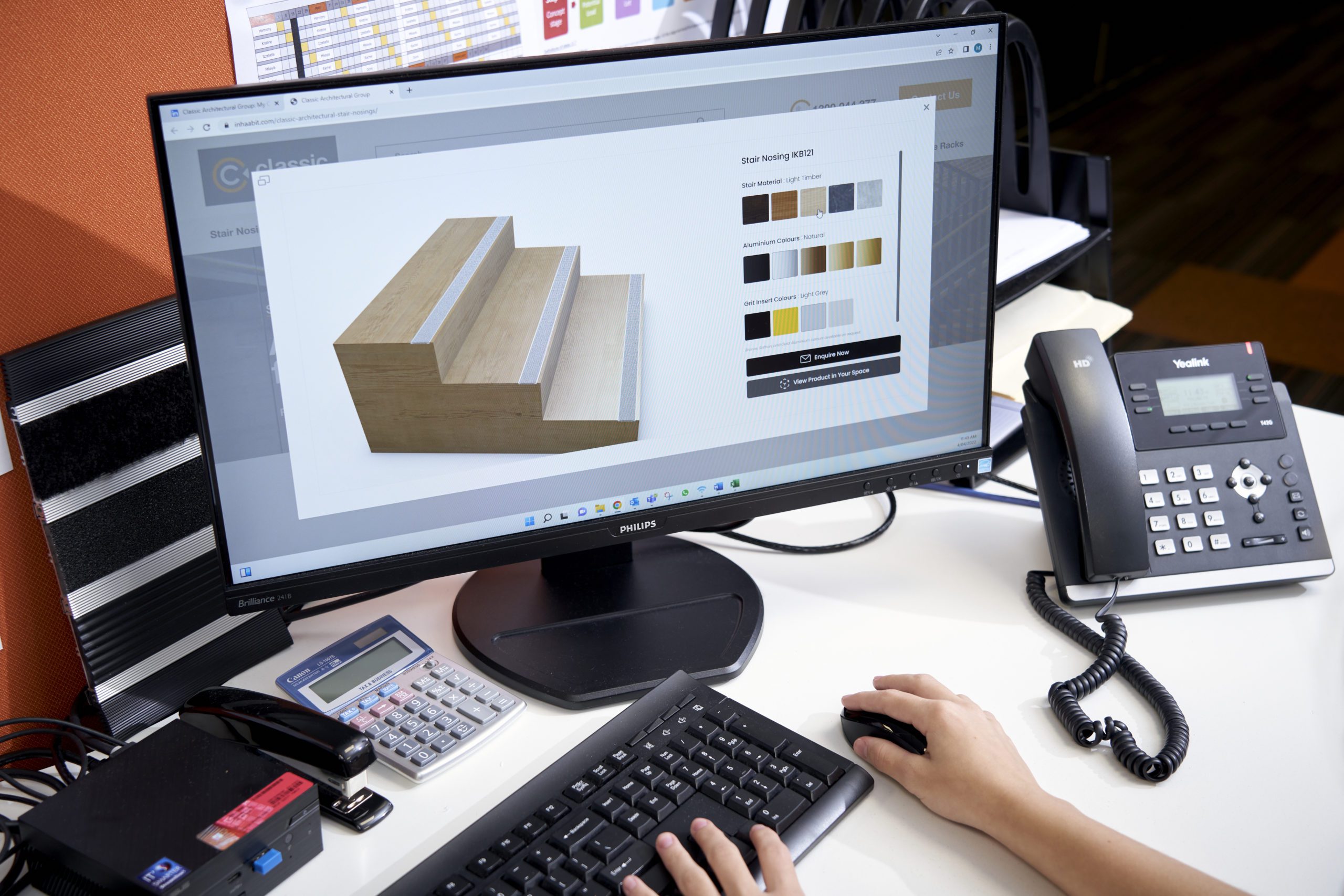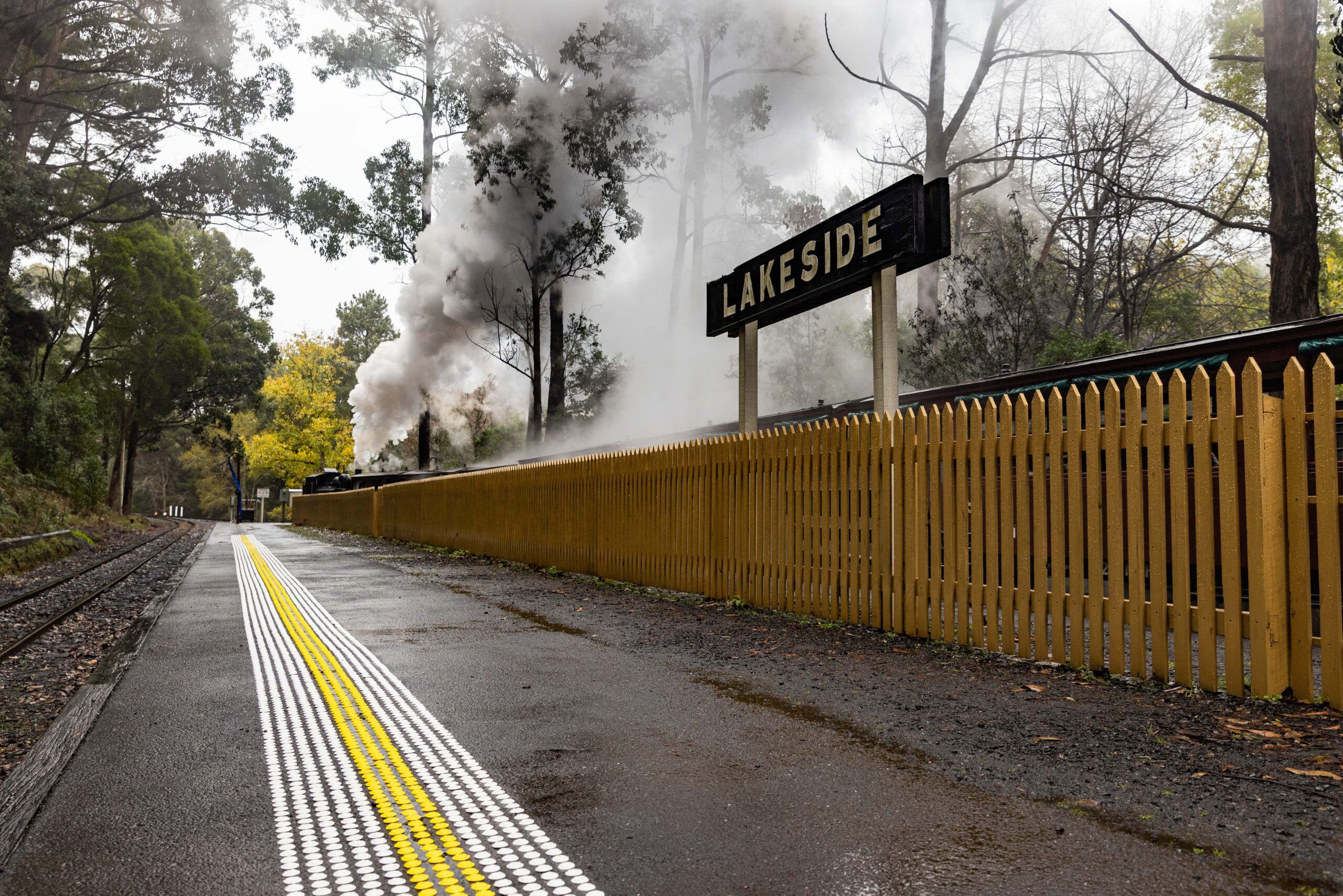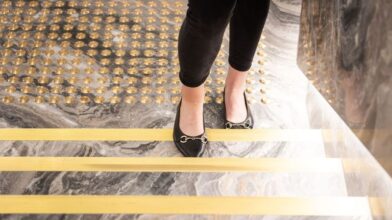Empowering the visually impaired to navigate life with confidence
Taking place on Thursday 13 October this year, World Sight Day is a global initiative to focus the world’s attention on the importance of eye care. From helping people prioritise their own eye health to encouraging leaders to ensure accessible, inclusive and affordable eye care for everyone, everywhere, this year’s campaign is #LoveYourEyes.
Led by The International Agency for the Prevention of Blindness (IAPB), there are 1.1 billion people globally living with vision loss, and a further 2 to 3 billion needing ongoing access to eye care services. In Australasia alone, there are an estimated 1.6 million people with vision loss and of these, 69,000 are blind. By getting regular sight tests, 90% of vision loss can be prevented or treated with early detection.
Beyond impacting their health and well-being, vision impairments also impact individuals’ ability to navigate their surroundings safely and confidently, particularly in built and busy environments.
How does the loss of sight affect one’s quality of life and public safety?
According to the World Health Organization, vision impairment can severely impact one’s quality of life, regardless of age.
In the adult population, those with vision impairment often have lower rates of workforce participation and productivity, as well as higher rates of depression and anxiety. On the other hand, older adults with vision impairment can contribute to social isolation, difficulty walking, a higher risk of falls and fractures, and a greater likelihood of early entry into nursing or care homes.

When it comes to public safety and accessibility, the visually impaired often experience difficulties when accessing buildings and services. This can include a lack of orientation, difficulty finding their bearings, and a heightened risk of falling or bumping into obstacles.
Whether it’s vision impairments or other forms of disability, we all deserve equal access to public spaces, and the right to navigate our environments safely.
How to create a safe environment and reduce the risk of falls for the visually impaired
Across both indoor and outdoor settings, simple considerations to minimise risk and prevent falls can include:
- Making outdoor walking paths detectable and safe
- Ensuring easily recognisable and accessible entrances
- Making indoor navigation easy and safe
- Installing floor and stair safety features such as tactiles and stair nosings
- Regular facility maintenance such as replacing worn-out entrance matting or floor trims
- Providing visible safety signage and equipment
While these are just some examples that can help with creating a safe environment, building professionals should do their due diligence to comply with all anti-discrimination standards and safety regulations.
Australian Standards in building design to support the visually impaired
Emphasising the need for good design and planning of public spaces, the Australian Standards highlights the importance of tactile indicators and stair nosings for floor and stair safety.
Australian Standards for tactile indicators
Tactile ground surface indicators (TGSI) play an important role in providing hazard warnings and directional information for the vision impaired, also supported by the Building Code of Australia (BCA) Section D Clause 3.8, as well as the Disability Discrimination Act (DDA). Tactiles are often installed on stairs, rail platforms, ramps, kerb ramps, pedestrian walkways and vehicle carriageways.
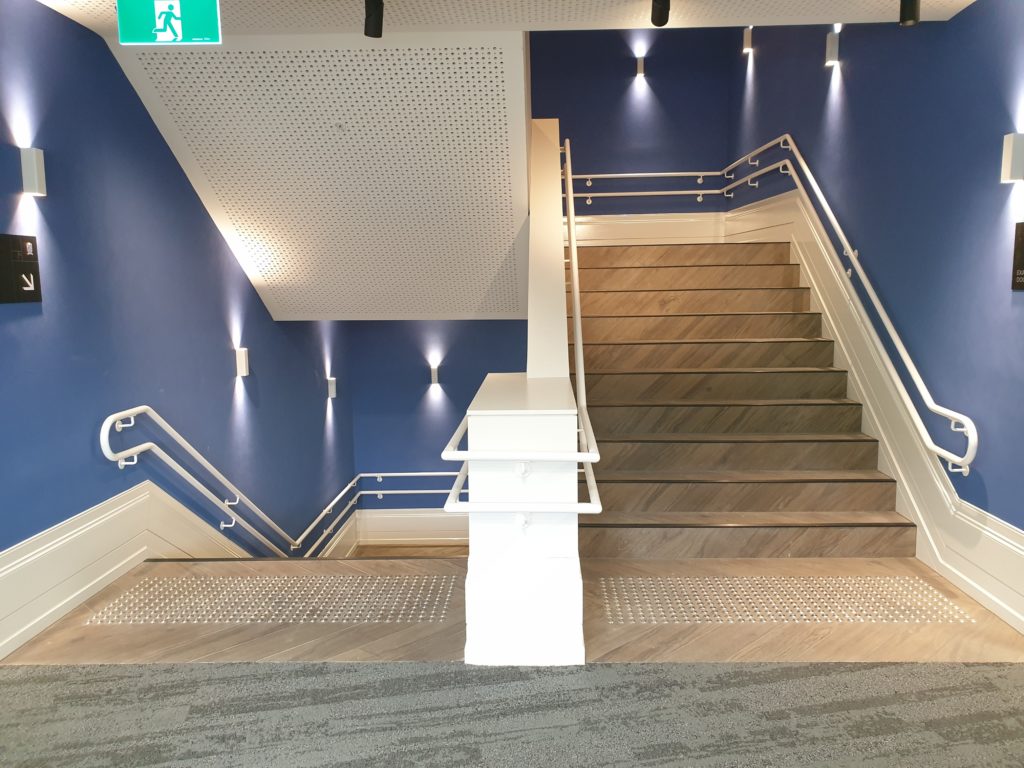
TGSIs must meet the following AS/NZS 1428.4 requirements:
- Installed across the full width of the path of travel, enabling them to be felt underfoot or with the tip of a cane.
- The surface must be slip-resistant.
- Integrated (tile) type tactiles must meet a minimum luminance contrast standard of 30%
- An individual tactile of one colour needs to achieve 45%
- 60% is required for two colours
- The top of the tactile indicators must sit no more than 4 -5mm above the base surface.
Here is a list of public access areas that MUST have tactiles installed to ensure safe access for visually impaired pedestrians. For more information on the application and installation of stair nosings, please read our Tactile Indicators Product Application Guide.
Australian Standards for stair nosings
In accordance to AS1428.1, stair nosings are a general requirement for all new building work and must be installed across the entire width of the accessible path of travel.
Clause 11 of the Standard specifically addresses requirements for stairways and stair nosings, focusing on promoting luminance contrast at the leading edge of step treads together with the avoidance of overhang at the front of stair treads.

Stair nosings must meet the following AS1428.1 Luminance Contrast requirements:
- Each tread is to have a minimum strip of 50mm and not more than 75mm deep across the width of the path of travel.
- The nosing strip is to have a minimum contrast of 30% to the floor finish.
- The nosing strip may be set back a maximum of 15mm from the front of the nosing.
- When located at the front of a stair nosing, the luminance contrast strip cannot extend down the riser more than 10mm.
- Stair nosing profiles may have a sharp intersection or a radius up to 5mm, or up to a 5mm x 5mm chamfer at the tread/riser intersection.
For more information on the application and installation of stair nosings, please download our Stair Nosings Product Application Guide. You can also learn more about Australian Standards requirements for stair nosing here.
LRV & Luminance Contrast Testing to ensure compliance with building standards and code of practice
It is crucial that building professionals factor in the safety and accessibility of public spaces for the visually impaired in the early stages of any project. This not only helps the visually impaired to navigate public spaces but also minimises costly ramifications down the track. While the above Australian Standards for tactile indicators and stair nosings outline basic requirements, LRV and luminance contrast testing will ensure your complete compliance.
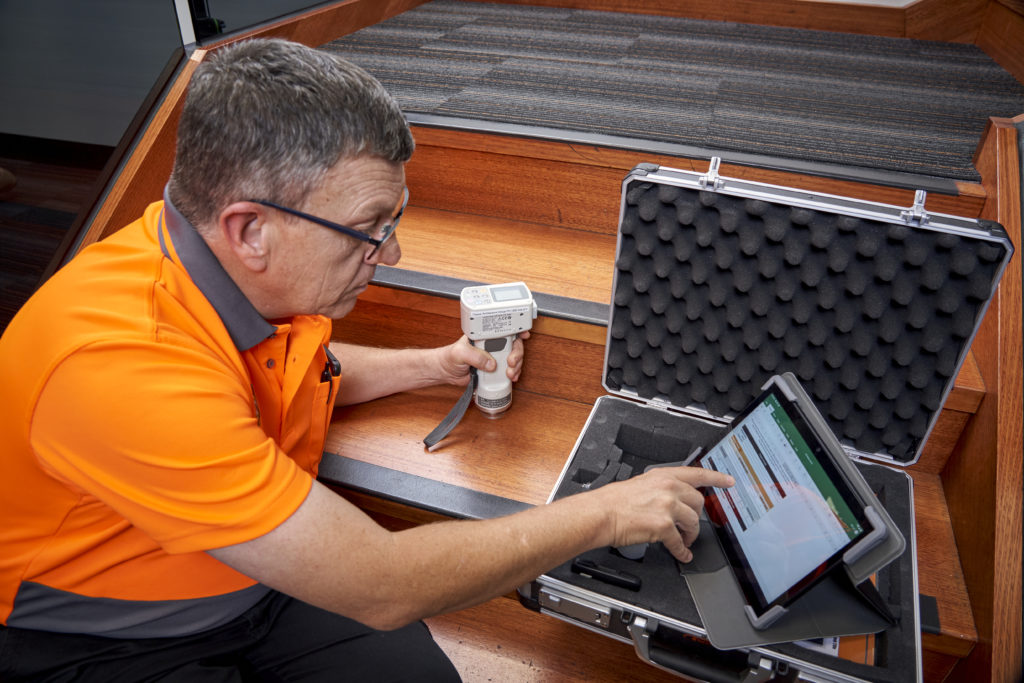
Comparing the luminance reflectance of two different surfaces, Luminance Contrast Testing ensures that the vision impaired have sufficient visual cues to distinguish between various elements of a building. On the other hand, Light Reflective Value (LRV) is a measure of visible and usable light that is reflected from a coloured surface when illuminated by a light source.
Both LRV and Luminance Contrast Testing are mandatory as per Australian Standards (AS 1428.1:2009 and AS1428.4.1:2009), The National Construction Code/Building Code of Australia and The Disability Discrimination Act (DDA).
You can learn more about LRV and Luminance Contrast Testing here.
Create a more inclusive built environment with Classic Architectural Group
Building on over 40 years of proven expertise in floor safety and access solutions for all industry sectors, we’re your convenient one-stop shop with people and operations throughout Victoria, New South Wales and Queensland. Getting you a step ahead, we specialise in fulfilling the complete supply chain, from design to installation, across our core product ranges.
Ensuring accessibility and safety, our industry-leading solutions span both indoor and outdoor applications:
- Stair Nosings
- Tactile Indicators
- Commercial Entrance Matting
- Car Park Safety
- Bike Racks
- Skate Deterrents
- Floor Trims & Covers
Empowering you to improve safety and accessibility for our visually-impaired community, Classic Tredfx stair nosings and tactile ground surface indicators are available in a diverse array of styles and colours to meet your project goals.
Making product selection simple, you can use our ‘Visualise It’ 3D/AR Product Visualisation Tool to get an accurate sense of scale, depth and spatial understanding of our products in situ – a building professional’s dream!

We also offer LRV and luminance contrast testing to ensure the compliance of your stair nosings and tactile indicators. Working closely with your team, we can produce reports from information collected on-site to document your level of compliance with building standards. Alternatively, you can use our Luminance Contrast Calculator to determine if your substrate and product is considered a ‘pass’ or ‘fail’ according to Australian Standards.
To book a tailored project consultation, please get in touch with our expert team by calling 1300 244 377 today.

